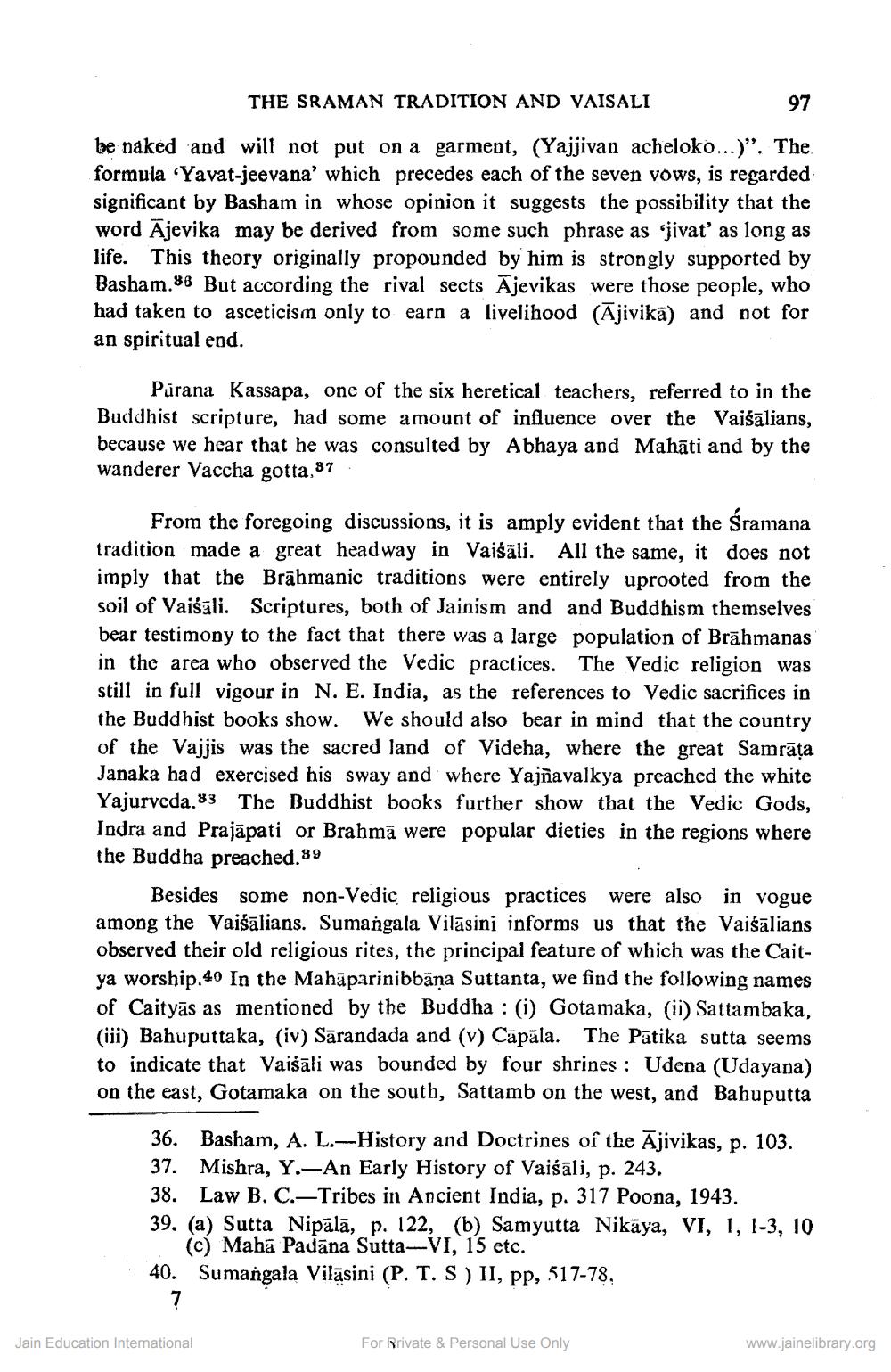________________
THE SRAMAN TRADITION AND VAISALI
97
be naked and will not put on a garment, (Yajjivan acheloko...)". The formula 'Yavat-jeevana' which precedes each of the seven vows, is regarded significant by Basham in whose opinion it suggests the possibility that the word Ajevika may be derived from some such phrase as 'jivat' as long as life. This theory originally propounded by him is strongly supported by Basham. But according the rival sects Ajevikas were those people, who had taken to asceticism only to earn a livelihood (Ajivikā) and not for an spiritual end.
Purana Kassapa, one of the six heretical teachers, referred to in the Buddhist scripture, had some amount of influence over the Vaišālians, because we hear that he was consulted by Abhaya and Mahati and by the wanderer Vaccha gotta,87
From the foregoing discussions, it is amply evident that the Śramana tradition made a great headway in Vaiśāli. All the same, it does not imply that the Brahmanic traditions were entirely uprooted from the soil of Vaisali. Scriptures, both of Jainism and and Buddhism themselves bear testimony to the fact that there was a large population of Brahmanas in the area who observed the Vedic practices. The Vedic religion was still in full vigour in N. E. India, as the references to Vedic sacrifices in the Buddhist books show. We should also bear in mind that the country of the Vajjis was the sacred land of Videha, where the great Samrata Janaka had exercised his sway and where Yajnavalkya preached the white Yajurveda. The Buddhist books further show that the Vedic Gods, Indra and Prajapati or Brahma were popular dieties in the regions where the Buddha preached.89
Besides some non-Vedic religious practices were also in vogue among the Vaišalians. Sumangala Vilasini informs us that the Vaisālians observed their old religious rites, the principal feature of which was the Caitya worship.40 In the Mahāparinibbāņa Suttanta, we find the following names of Caityās as mentioned by the Buddha: (i) Gotamaka, (ii) Sattambaka, (iii) Bahuputtaka, (iv) Sārandada and (v) Cāpāla. The Patika sutta seems to indicate that Vaišali was bounded by four shrines: Udena (Udayana) on the east, Gotamaka on the south, Sattamb on the west, and Bahuputta
36. Basham, A. L.-History and Doctrines of the Ajivikas, p. 103. 37. Mishra, Y.-An Early History of Vaiśāli, p. 243.
38. Law B. C.-Tribes in Ancient India, p. 317 Poona, 1943.
39. (a) Sutta Nipālā, p. 122, (b) Samyutta Nikaya, VI, 1, 1-3, 10 (c) Maha Padāna Sutta-VI, 15 etc.
40. Sumangala Vilasini (P. T. S) II, pp, 517-78,
7
Jain Education International
For Rrivate & Personal Use Only
www.jainelibrary.org




